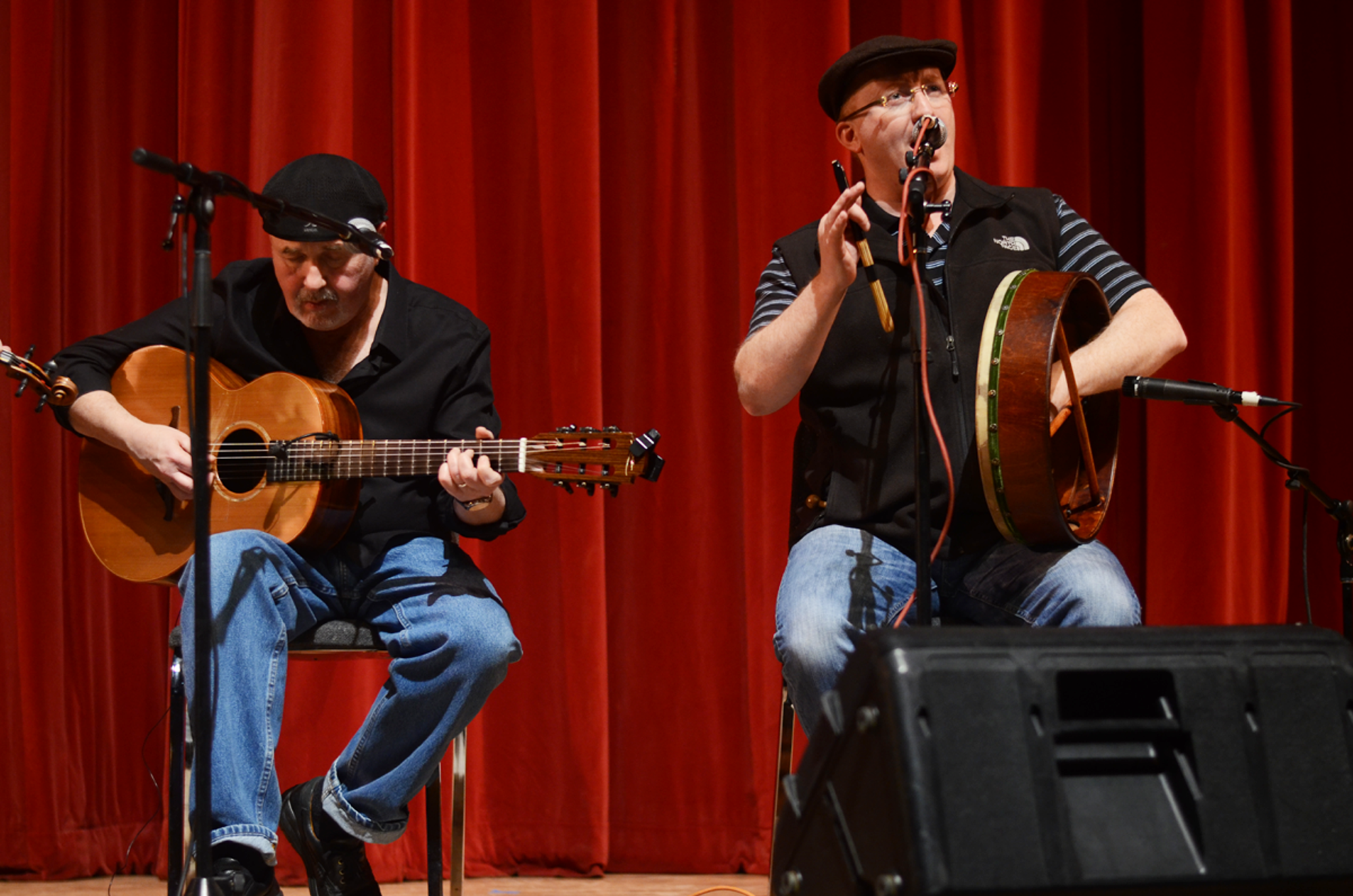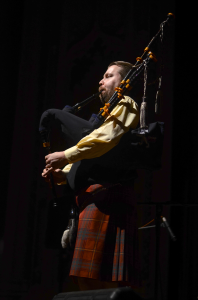
This past weekend, the University of Chicago held its fifty-fourth annual Folk Festival. The organizers gathered an eclectic collection of roots music performers, including the “Queen of Cajun music”, Sheryl Comier, and her family band, South Side Gospel superstar Calvin Bridges, and ten-time Grammy award-winning bluegress violinist, Bobby Hicks, among others. Over the course of the weekend, the roots musician performed three three-hour sets for the assembled Mandel Hall audience, many of whom sashayed their way onto the the stage.
The Mandel Hall shows weren’t the only highlight of the festival. The musicians also held intimate gatherings throughout the weekend to teach and pass on a variety of folk songs, dance, crafts, and styles. We chose to profile four of our favorite workshops.
Guitar Styles of Blind Blake with Ari Eisinger
As a guitar teacher, Ari Eisinger is an exacting professional. The fingerpicking, six-string technician is deeply dedicated to blues artists from the 1920s and 30s including Blind Blake, the enigmatic blues virtuoso who briefly took up residence on the South Side of Chicago. Eisinger studied these guitar styles under Dave Van Ronk a model for the titular character of the Coen Brothers’ “Inside Llewyn Davis.” The man who appeared at the workshop presented himself as a sobered-up, button-down version of his teacher, a musician famously described by music critic Robert Shelton as the embodiment of an “unmade bed strewn with books, record jackets, pipes and empty whiskey bottles.” Eisinger, diminutive and soft spoken, was very precise in his execution of the complex fingerpicking style, delivering note-for-note recreations of Blind Blake’s repertoire while fielding a range of technical questions about tone control, sustain, and resonance. He also pointedly explained his preferences for certain styles within the blues tradition. “When you listen to Muddy Waters you already know what all the chords will be” Eisinger said, comparing the intricate Piedmont style to the Chicago blues’ commitment to basic 12-bar blues forms. “Sorry,” he added quietly while fine-tuning his strings. “My prejudice, my opinions are coming out.” (Zach Goldhammer)
Irish Social Dance
You didn’t need to know the difference between a reel, a jig, and a hornpipe to dance all of them at the Irish Social Dance workshop. Instructor Ed Heffernan, a middle-aged, jolly-looking man in a kilt, promised the crowd that there would be no fancy footwork involved—“This isn’t Irish step dancing!”—but that didn’t mean that the dances were simple. Every participant found themselves a partner, and then that couple joined three other couples to form a square. The dance happened in a blur, as each pair swung past each other in an interlocking series of moves. Stumble over a turn-around or grab the wrong partner, and the whole chain could quickly fall apart—which it frequently did. “You were supposed to go left!” Heffernan shouted, and the rollicking music began again. The band was the Murphy Roche Irish Music Club, made up of three adults and several teen and preteen students. The crowd was similarly intergenerational—toddlers rode on the toes of their mothers toes and older couples swung each other around like they were young again. When we got to the hornpipe, we literally bounced—my partner lifted me up in air as we hopped like frogs to the sound of the banjo, fiddle, and accordion. No wonder the instructor called it “Irish Aerobics.” (Sharon Lurye)

Crankie Making
I didn’t know what to expect when I walked into a workshop that promised to teach me how to make my own crankie, a form of moving-picture folk art often accompanied by song or narration. In their workshop, Elizabeth LaPrelle and Anna Roberts-Gevalt showed us two homemade crankie scrolls. Each had a frame that houses two rotating rods connected by a long scroll, which can be made of any material that allows it to be wound around the rods. The first was quilted and embroidered and told the story of a lord and the long-lost love that came to find him. The second was made from translucent paper and used shadow puppets to supplement the motion of the crankie and tell the story of a Virginian poet in the 1930s. The toddlers and other young kids in attendance especially enjoyed the presence of shadow puppet trains. The workshop concluded with attendants building their own crankies out of cardboard, packing tape, skewers, construction paper, and crayons. While mine was not as regal or nicely put together as the ones LaPrelle and Roberts-Gevalt demonstrated—or even the ones made by the parents of the children in attendance—I gave it my best try and came out of the workshop with a crankie telling the epic tale of a crayon-drawn dog and his friends. (Emily Lipstein)
Beginner’s Harmonica
“If you can breathe, you can play harmonica.” It was this sentence that assured me my five-dollar investment in a harmonica at the Beginner’s Harmonica Workshop was going to pay for itself. In just an hour, we learned the basics of playing the harmonica, starting with the right grip and working our way up to blues structure. Instructor Joe Filisko informed us that precision could pretty much be thrown out the window, as long as we were in the general vicinity of where our mouth needed to be. There were two key lessons on blues playing: when in doubt, inhale, and keep everything on the lower five notes of the harmonica. Here we found the kind of low, rattling loneliness of a train whistle we were trying to emulate. The harmonica isn’t a loud instrument, so it doesn’t take too much effort to breathe in and out. Add a little bit of rhythm, and you’re playing already. Later, Filisko led the group in a simple Cajun song—pointing backwards to have us inhale and forwards to exhale—with one side of the room playing a low rhythm and the other providing melody. Five dollars well spent. (Mark Hassenfratz)


